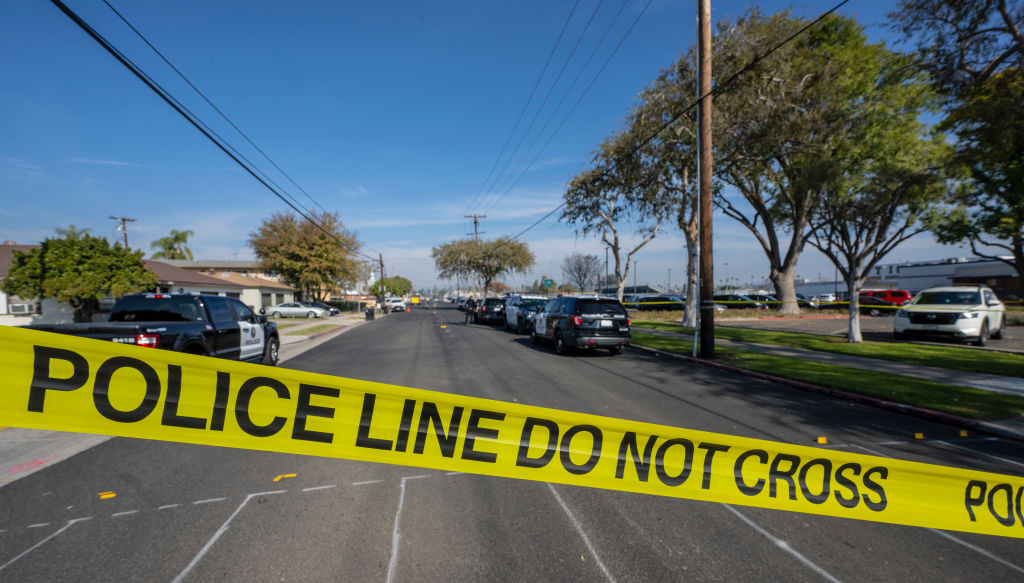Every economist knows Stein’s Law: “If something cannot go on forever, it will stop.”
That was Herbert Stein, Nixon economic adviser, professor, and longtime sage of the American Enterprise Institute. His axiom sounds tautological, but with Yogi Berra-like wisdom it points out a major flaw in the way humans think about causes and effects. Trends are reflections of the factors driving them, not the other way around.
And so it goes with America in this second year of post-pandemic life.
Jeff Asher, one of the founders of criminal justice consulting firm AH Datalytics, has been tracking some pretty remarkable numbers on what’s happening with crime in our country, particularly murder rates. In looking at 133 cities, Asher found that murder rates so far this year are down 20 percent nationally compared to the first quarter of 2023. And in some places, down by more than half.
Columbus, Ohio, saw 45 murders in the first three months of last year, but only 19 over the same period in 2024. San Antonio, Texas, dropped from 46 murders at the start of 2023 to 23 this year. Philadelphia enjoyed a 34 percent decline, going from 114 in the first quarter of 2023 to 75 through March of this year.
And this comes on the heels of a historic 12 percent decline from 2022 to 2023.
“Nationally, you’re seeing a very similar situation to what you saw in the mid-to-late ’90s,” Asher told the Wall Street Journal. “But it’s potentially even larger in terms of the percentages and numbers of the drops.”
Now, that’s a little bit like President Joe Biden taking credit for his awesome record on job creation. It’s a lot easier to add 15 millions jobs to the economy on the heels of 20 million workers getting sacked in one month.
The 21,570 homicides of 2020, nearly eight deaths for every 100,000 Americans, was a staggering increase. The previous year saw 16,669, the largest hike since the FBI started keeping records. And there was no let up in 2021.
It’s a lot easier to make big progress on a big problem.
Nor are murder rates down everywhere. Some hot spots like St. Louis, Atlanta, and Albuquerque have continued to see murder rates rise this year. Or consider the ravages of Louisville. Kentucky’s largest city has less than half the population of San Diego, California, but four times as many murders this year: 43 compared to 11.
But certainly the trend on violent crime is clear, and not just on murder. Rape, robbery, and aggravated assault have all been down sharply since 2022. Property crime rates are down, but not nearly as much, with FBI statistics pointing to a 4 percent decline from 2022 to 2023.
All in all, the madness unleashed in 2020 and 2021 seems to be ebbing. The number of traffic fatalities, which spiked in the pandemic years, is tapering off. The 10 percent increase of 2021, the largest hike since the post-war chaos of 1945 and 1946, leveled off in 2022, and the rate seems to actually have declined last year. Nearly 40,000 deaths is still quite a lot, but it puts Americans back in the direction of the consistent improvements of the 2000s and 2010s when the country reached our lowest level of fatalities per mile traveled at about 1 per million.
We don’t yet have reliable numbers on drug overdose deaths for last year, but in 2022 we saw the terrifying increases of 2020 and 2021 at least level off. Drug overdoses had been steadily worsening since the start of this century, but what happened in the pandemic years was truly stunning. Overdose deaths jumped by more than 21,000 in 2020 to 91,799. The next year saw 14,900 additional deaths. Numbers and rates stayed about the same in 2022, and there’s reason for hope that we will see the first significant decline in decades when the final tabulations for 2023 come out.
And one of the weirdest pandemic-era problems, the spike in violent and disruptive passengers on airline flights, saw a steep decline: an 80 percent drop in 2023 from 2021’s all-time high of 5,973 cases. The steepness of the decline there has a pretty obvious explanation. Once flight attendants didn’t have to enforce mask mandates or settle disputes between passengers over mask violations, life got a lot easier.
We can’t explain everything that’s getting better to the end of the pandemic, nor is it sufficient to explain why so many things got so much worse. No discussion of crime rates, for example, should omit what happened when police brutality protests became a flashpoint in 2020 and local leaders across the country clamped down on law enforcement in response.
But even there, we see a pandemic effect. Those protests were no doubt larger and more intense in a nation with millions of Americans not working and lockdown-era anxieties running high.
Two years is not a very long time for a nation, especially one as numerous, large, and diverse as ours. Federal, state, and local governments, schools, businesses, and other institutions undertook unprecedented disruptions to the American way of life in response to the pandemic. Some effects, like the consequences for children kept out of the classroom in some cases for two years, will last for generations. Others will simply take time to work their way out of our systems.
The good news is that Stein’s Law still applies, and these destructive trends do not seem to be continuing without the spark that lit them in the first place.






Please note that we at The Dispatch hold ourselves, our work, and our commenters to a higher standard than other places on the internet. We welcome comments that foster genuine debate or discussion—including comments critical of us or our work—but responses that include ad hominem attacks on fellow Dispatch members or are intended to stoke fear and anger may be moderated.
With your membership, you only have the ability to comment on The Morning Dispatch articles. Consider upgrading to join the conversation everywhere.